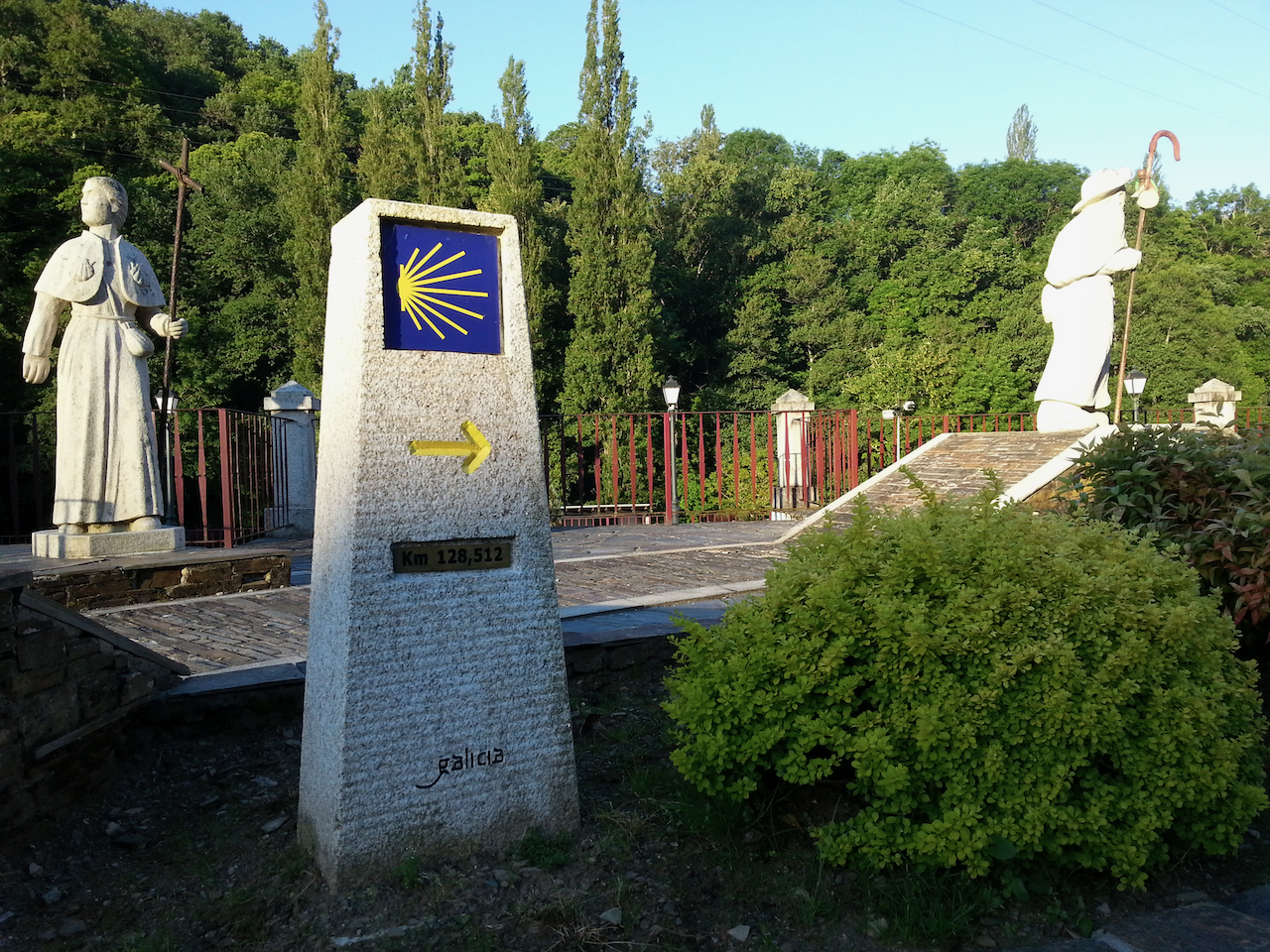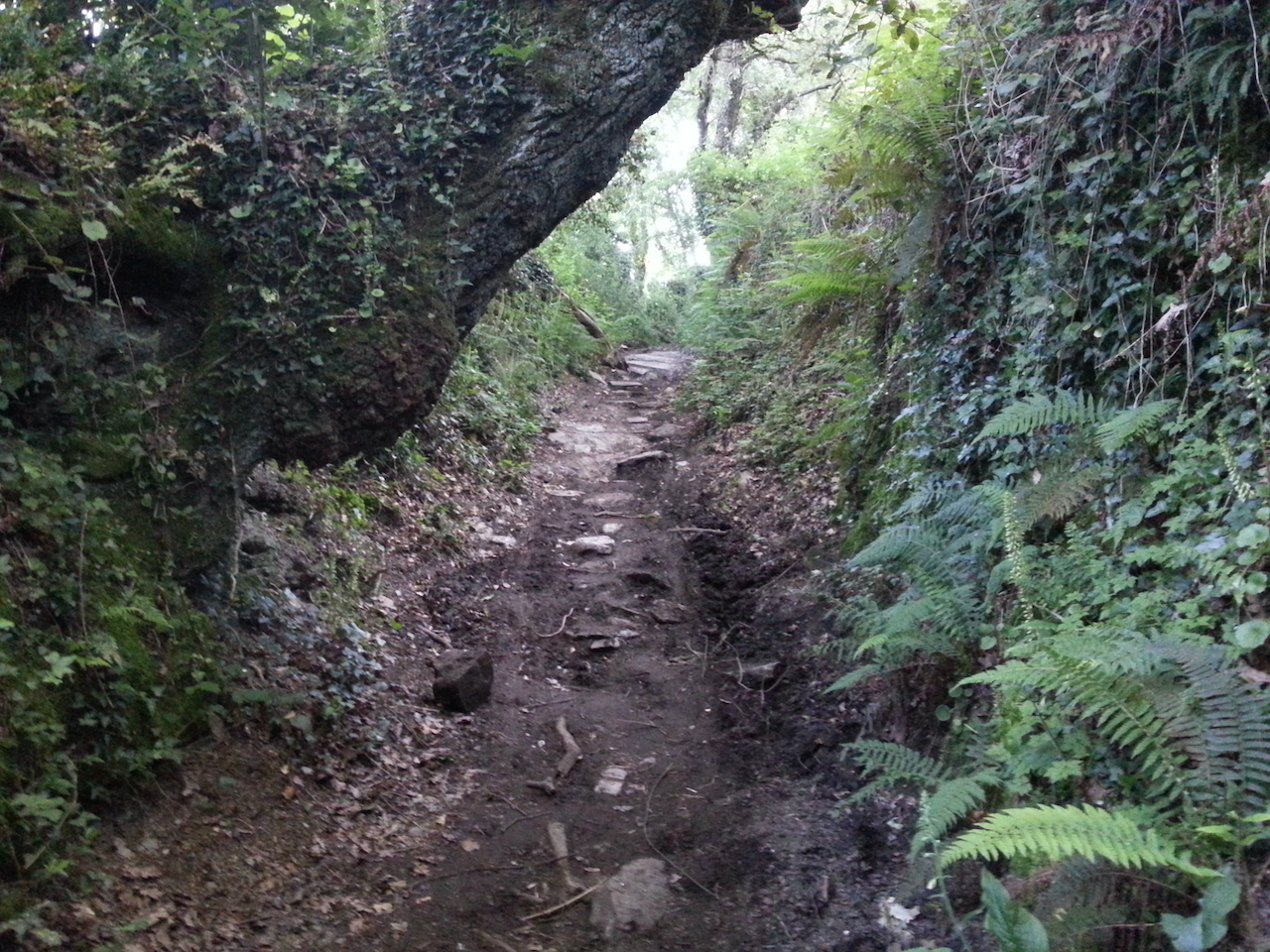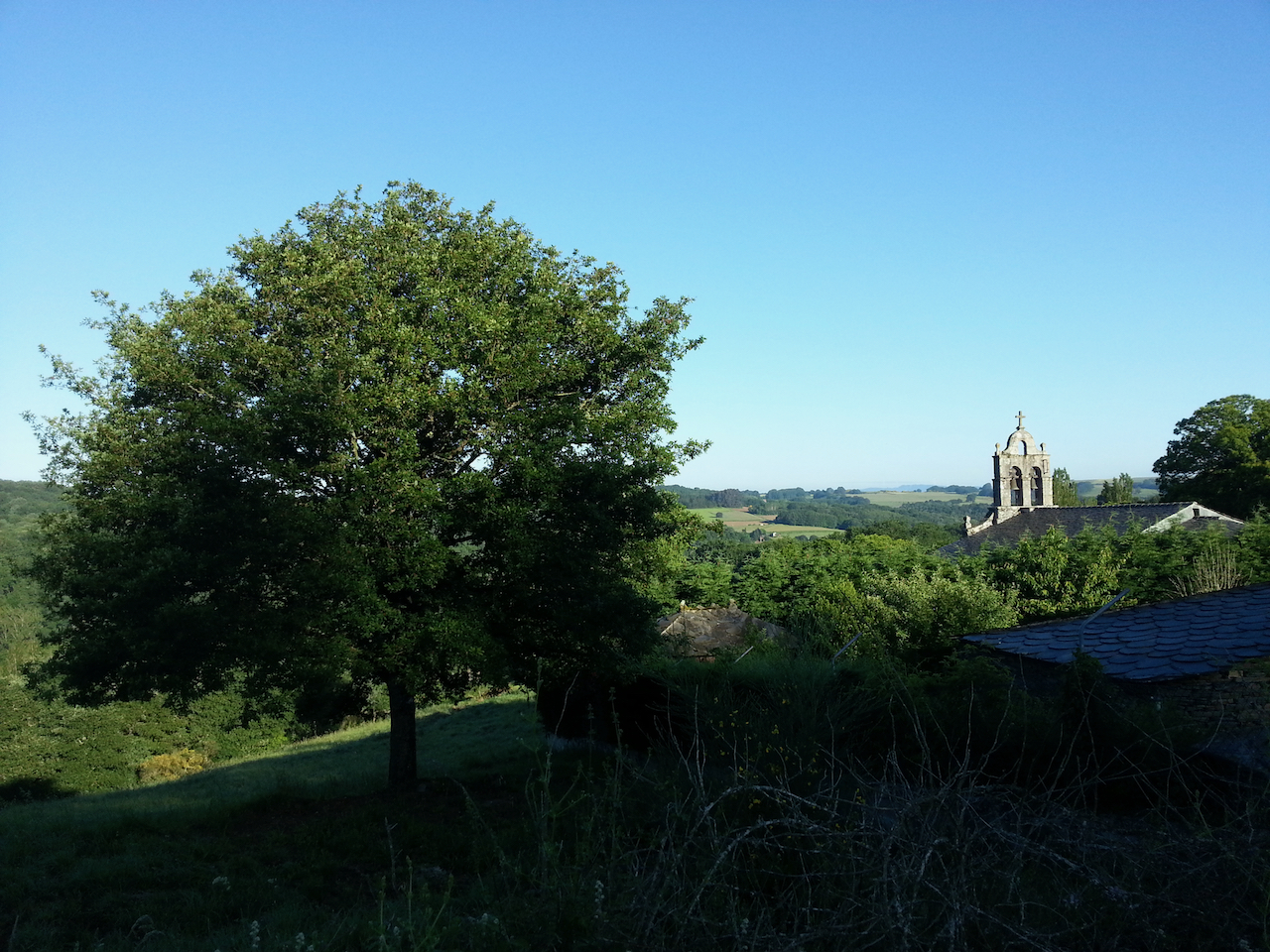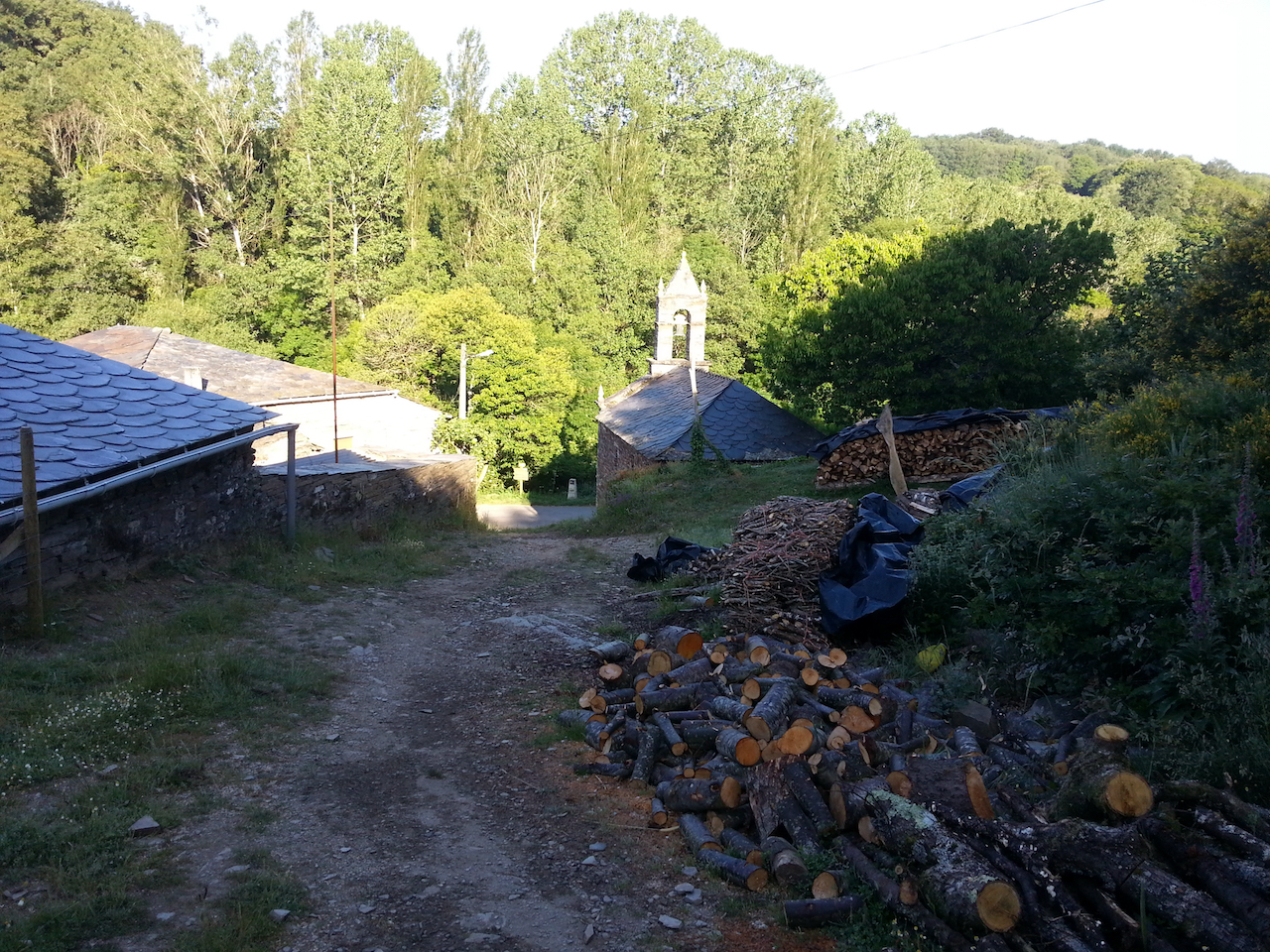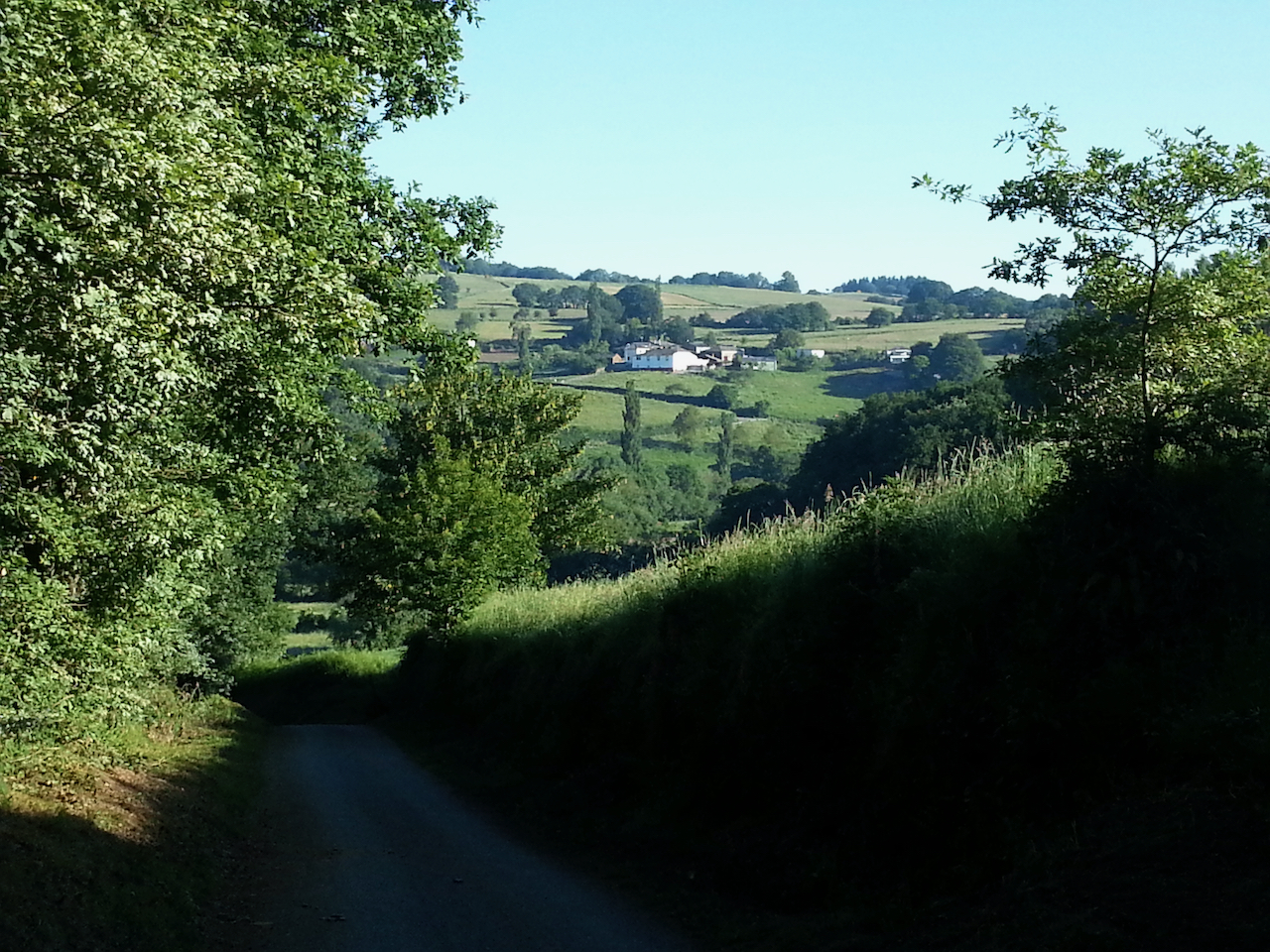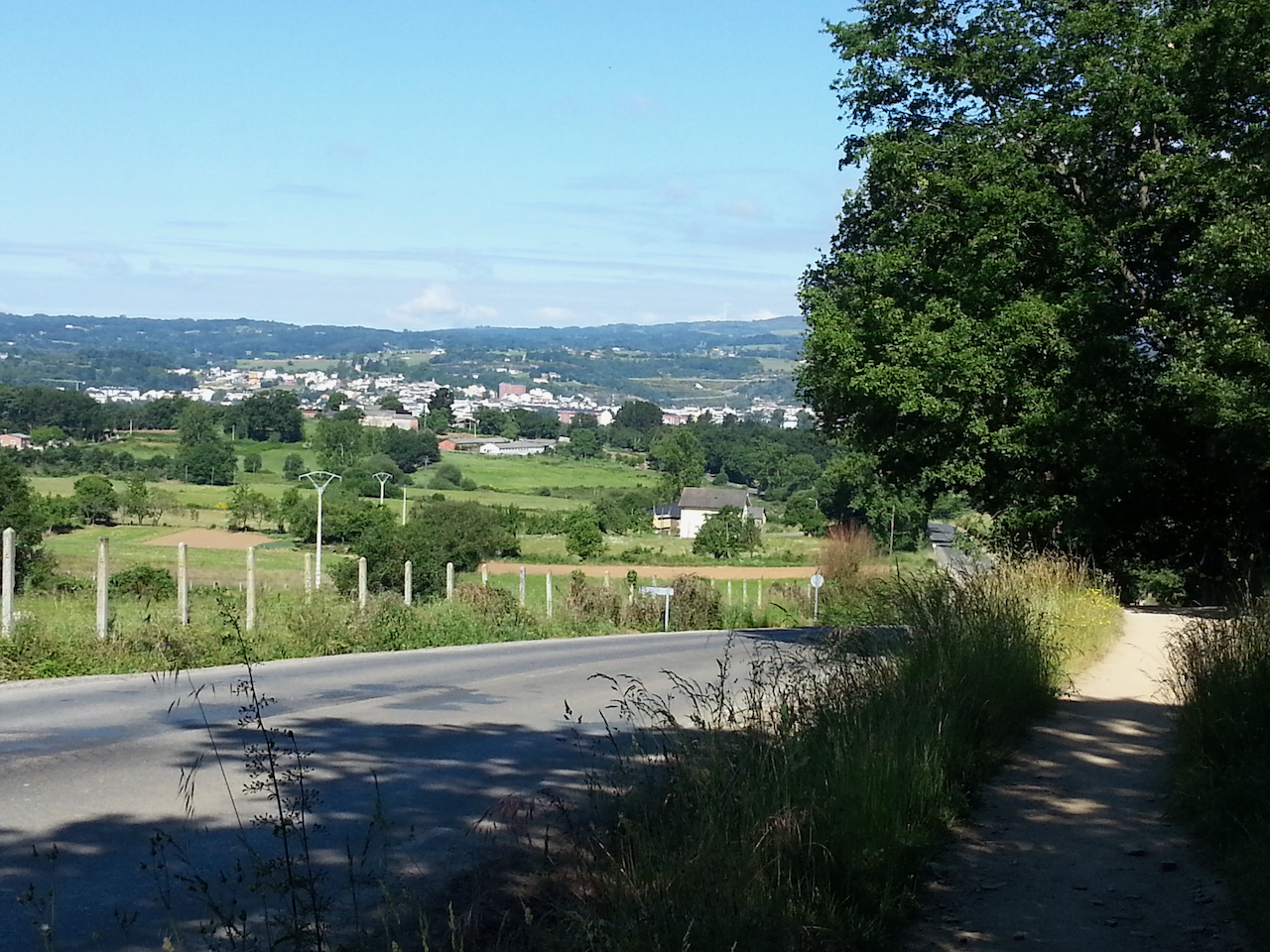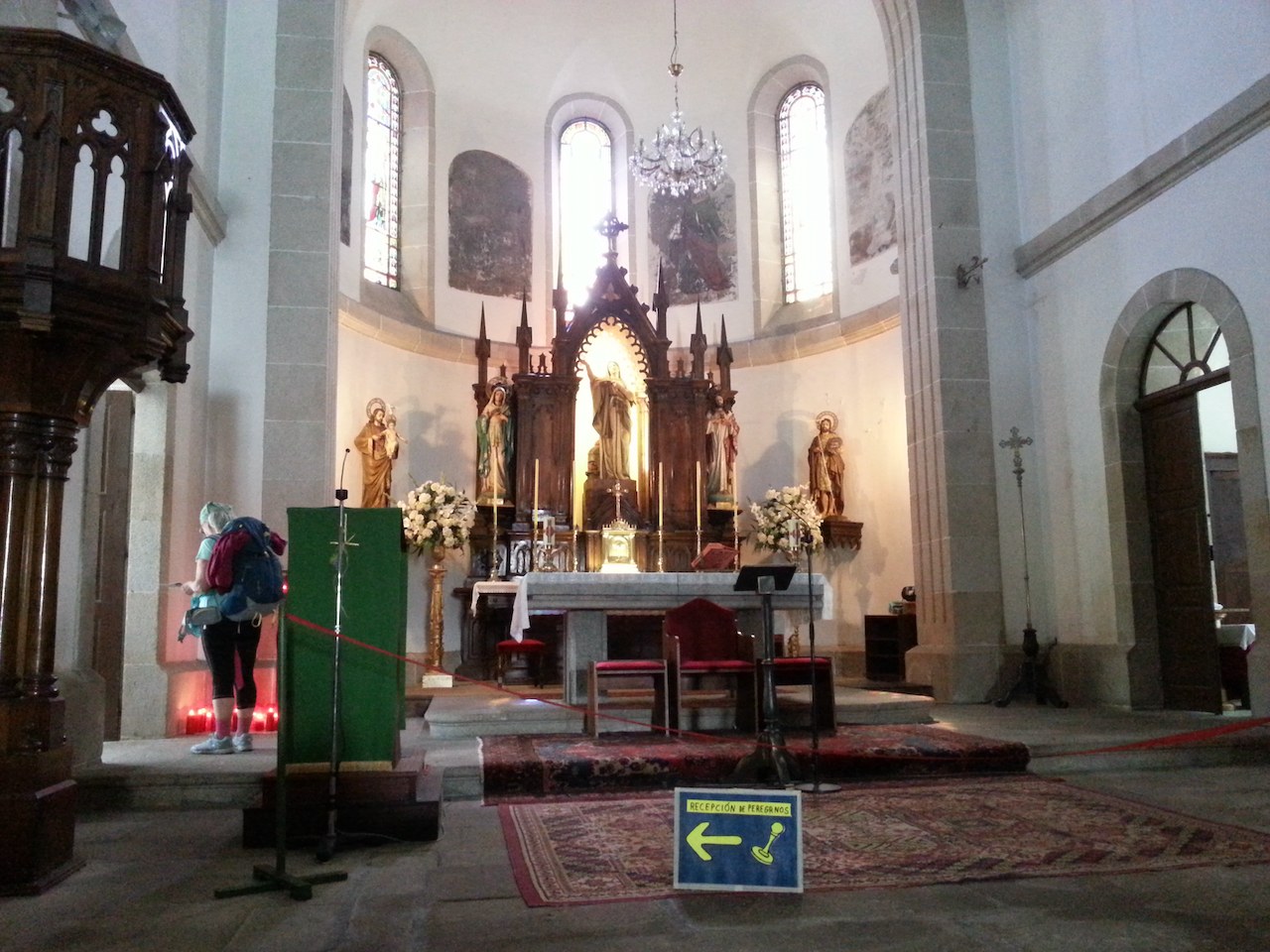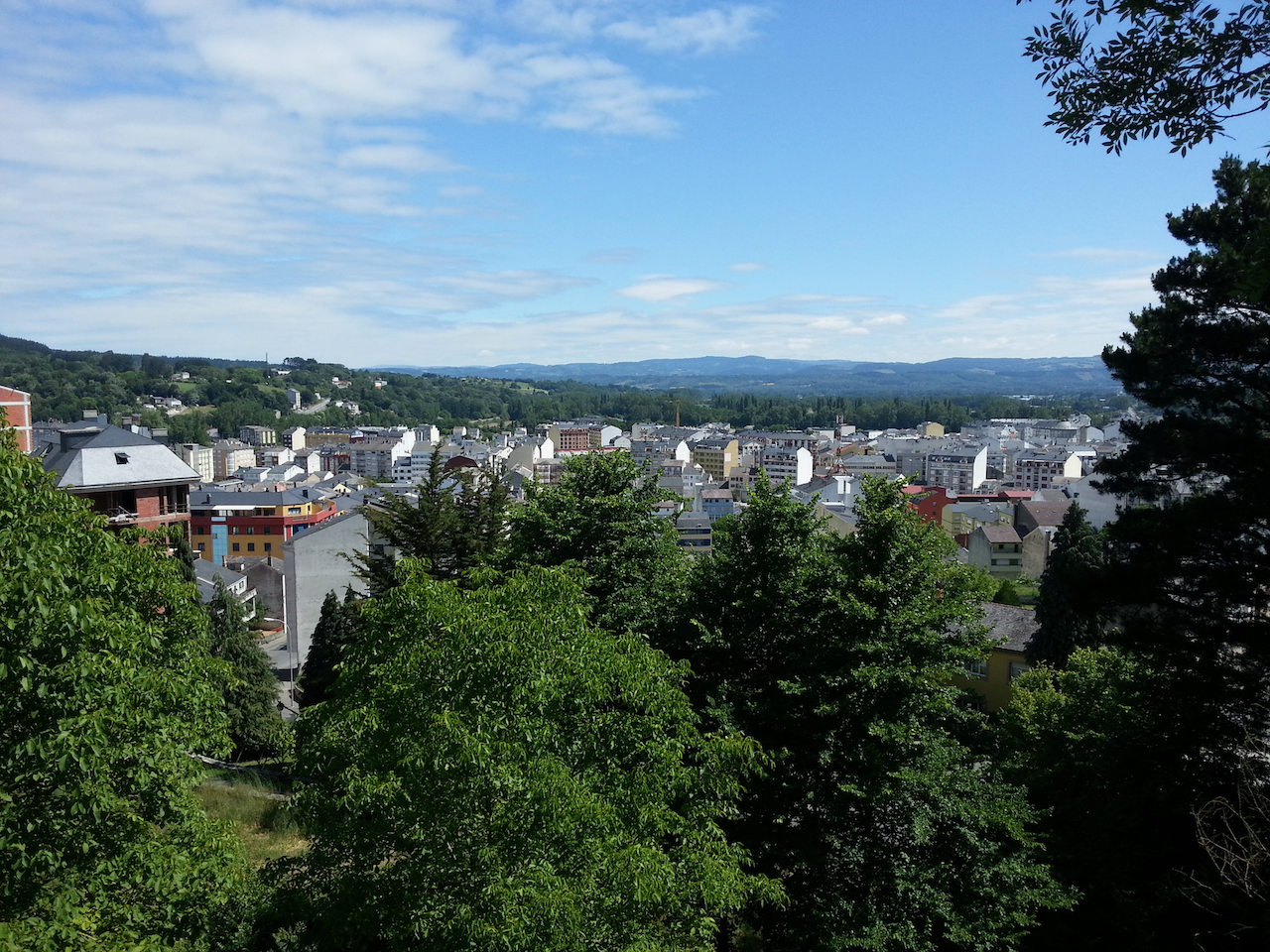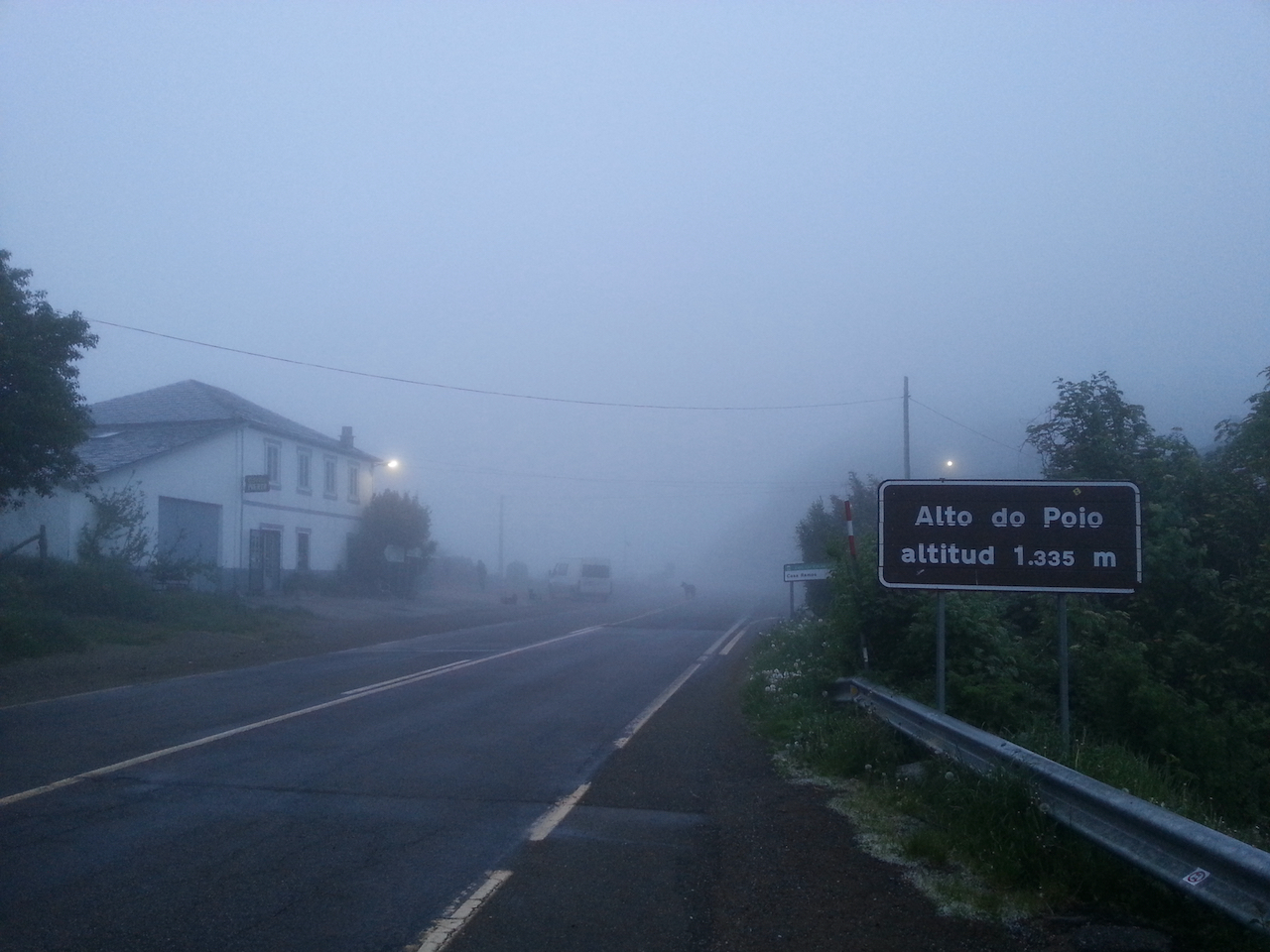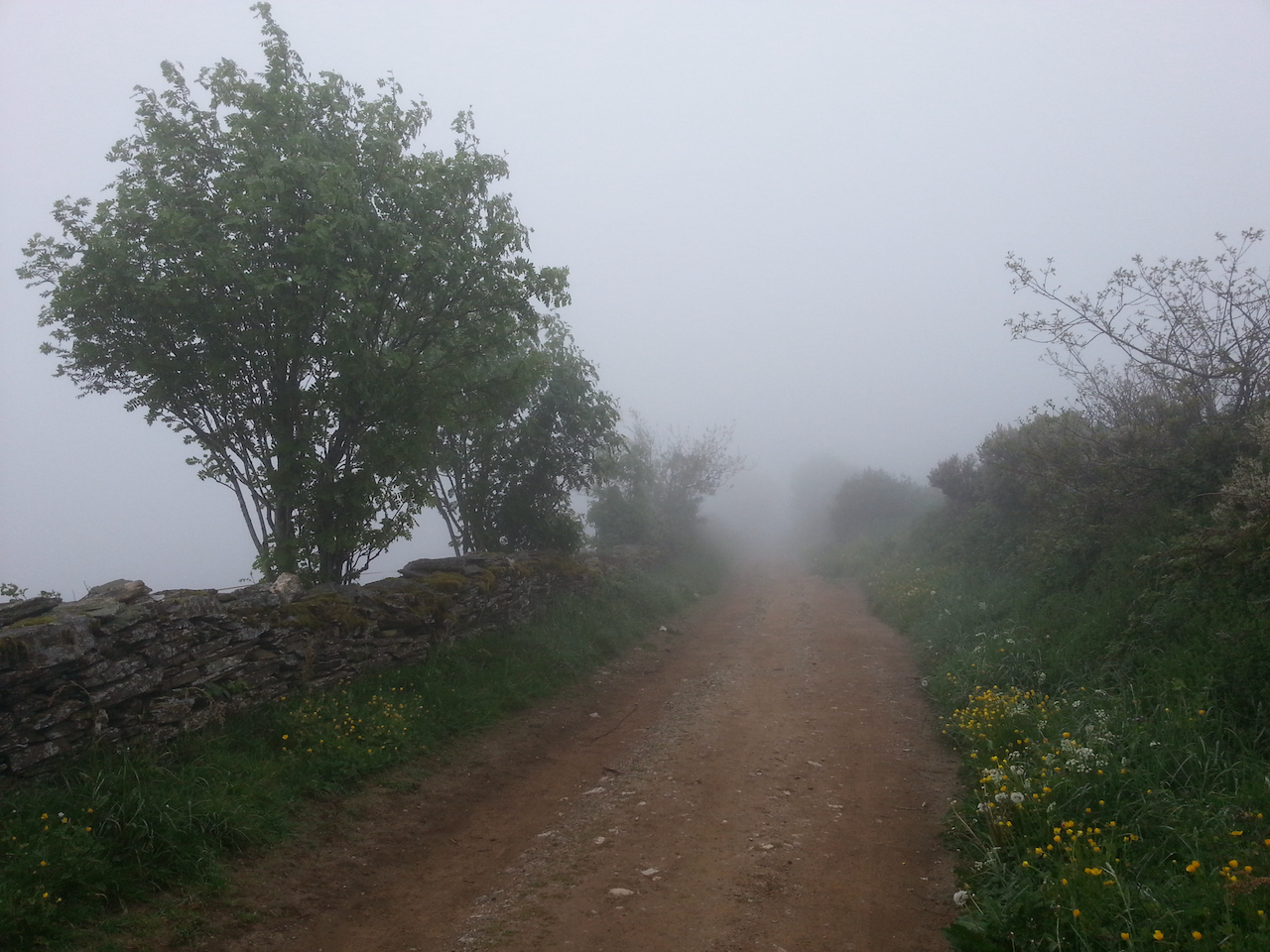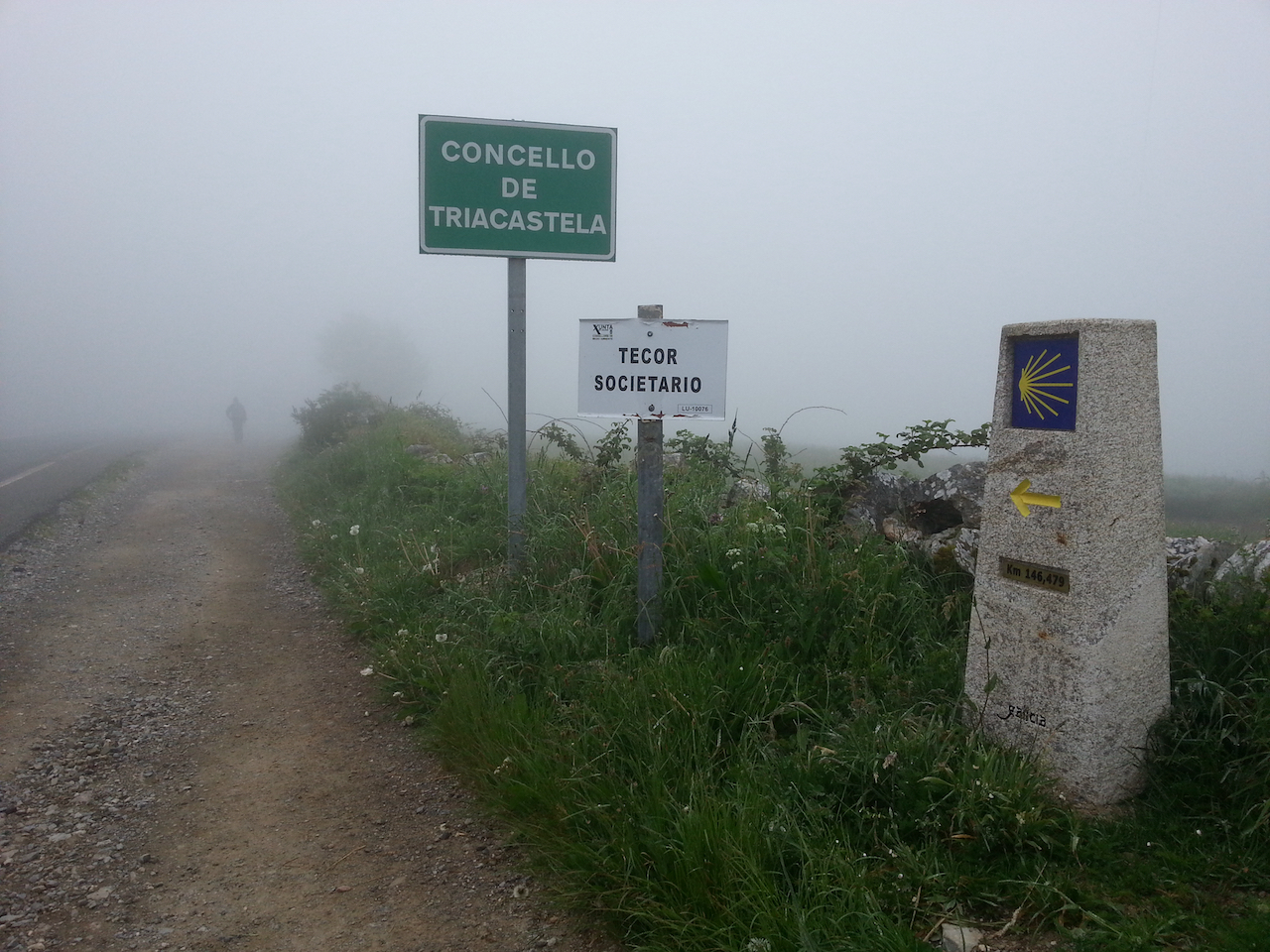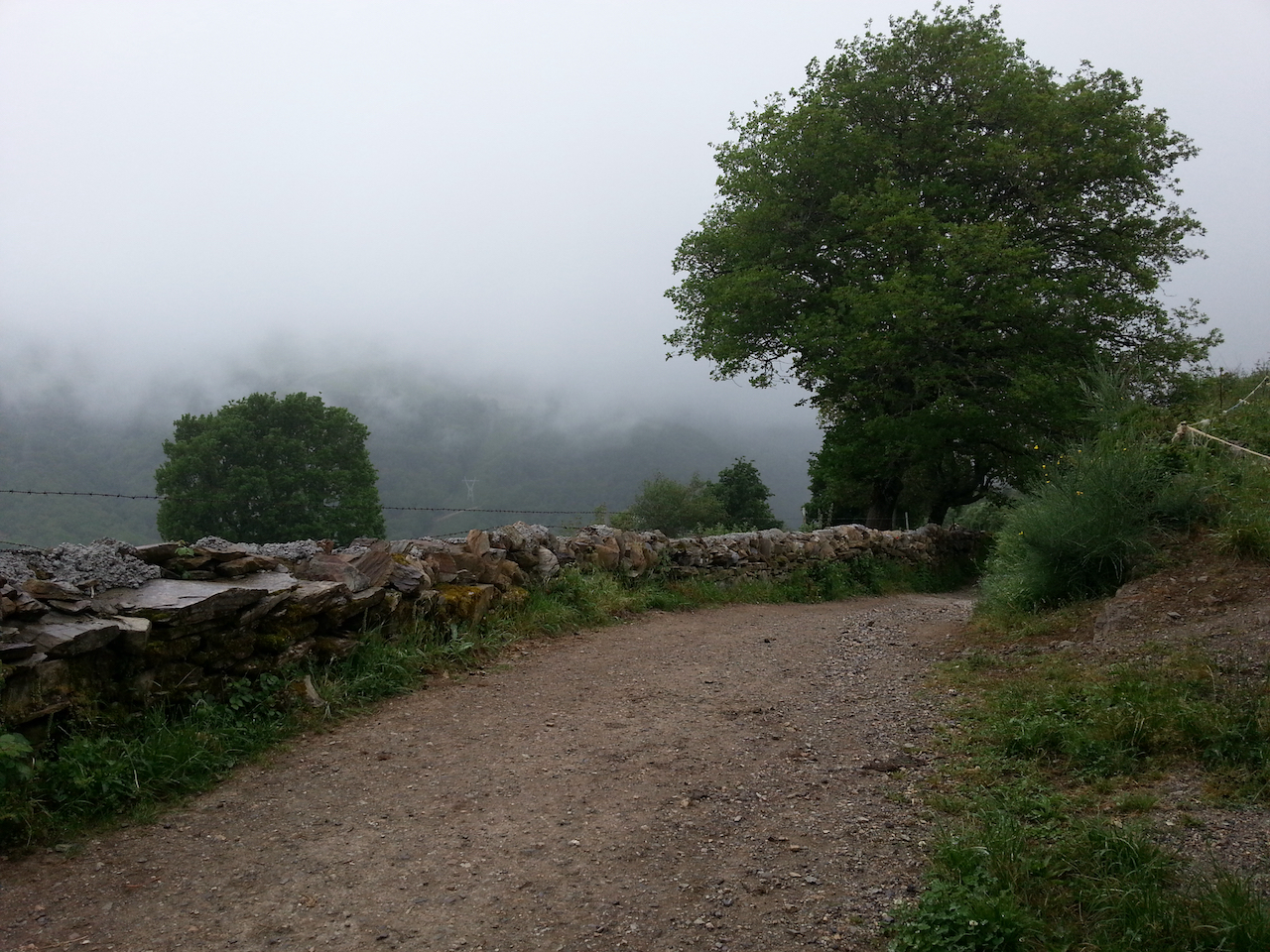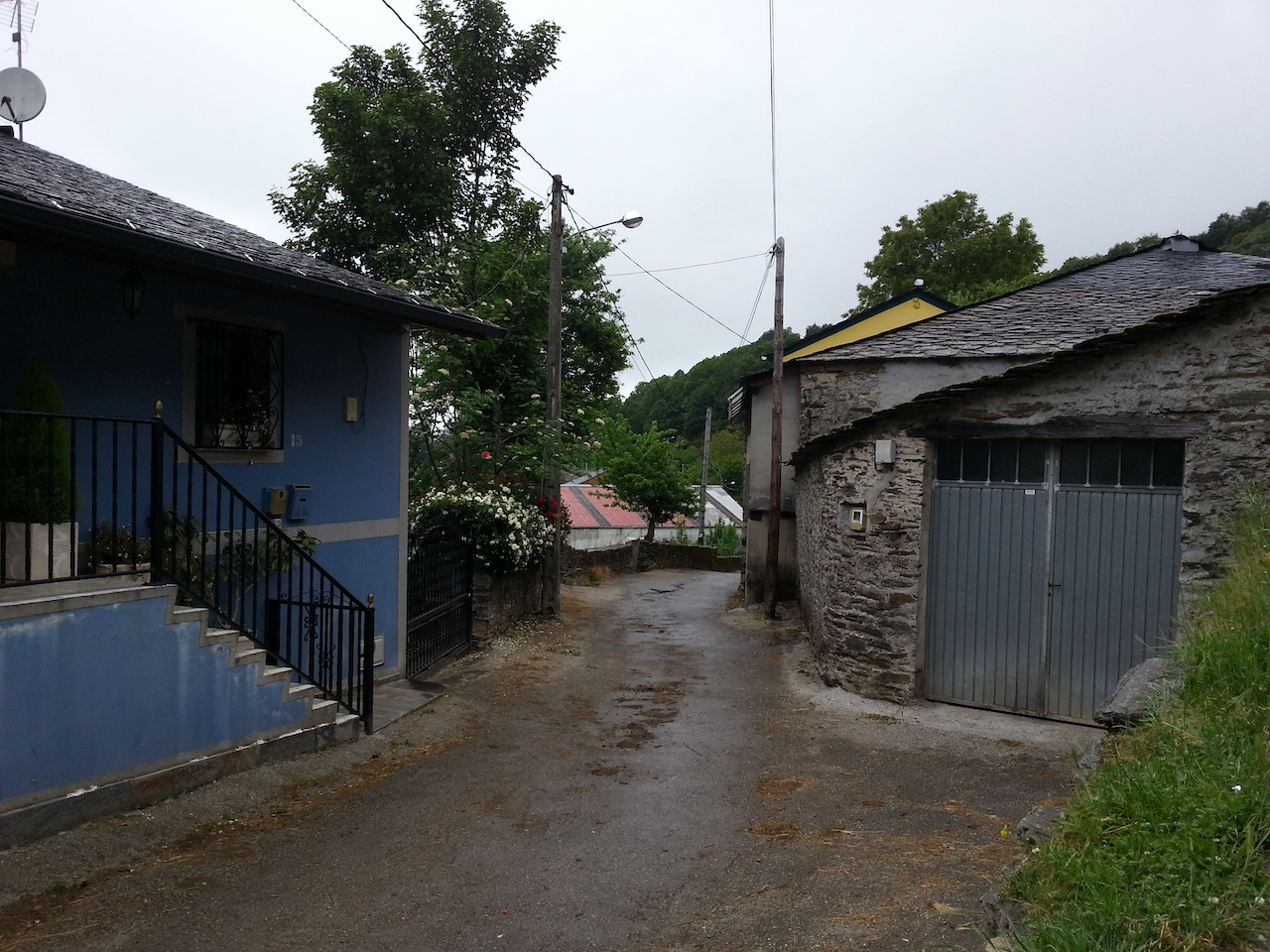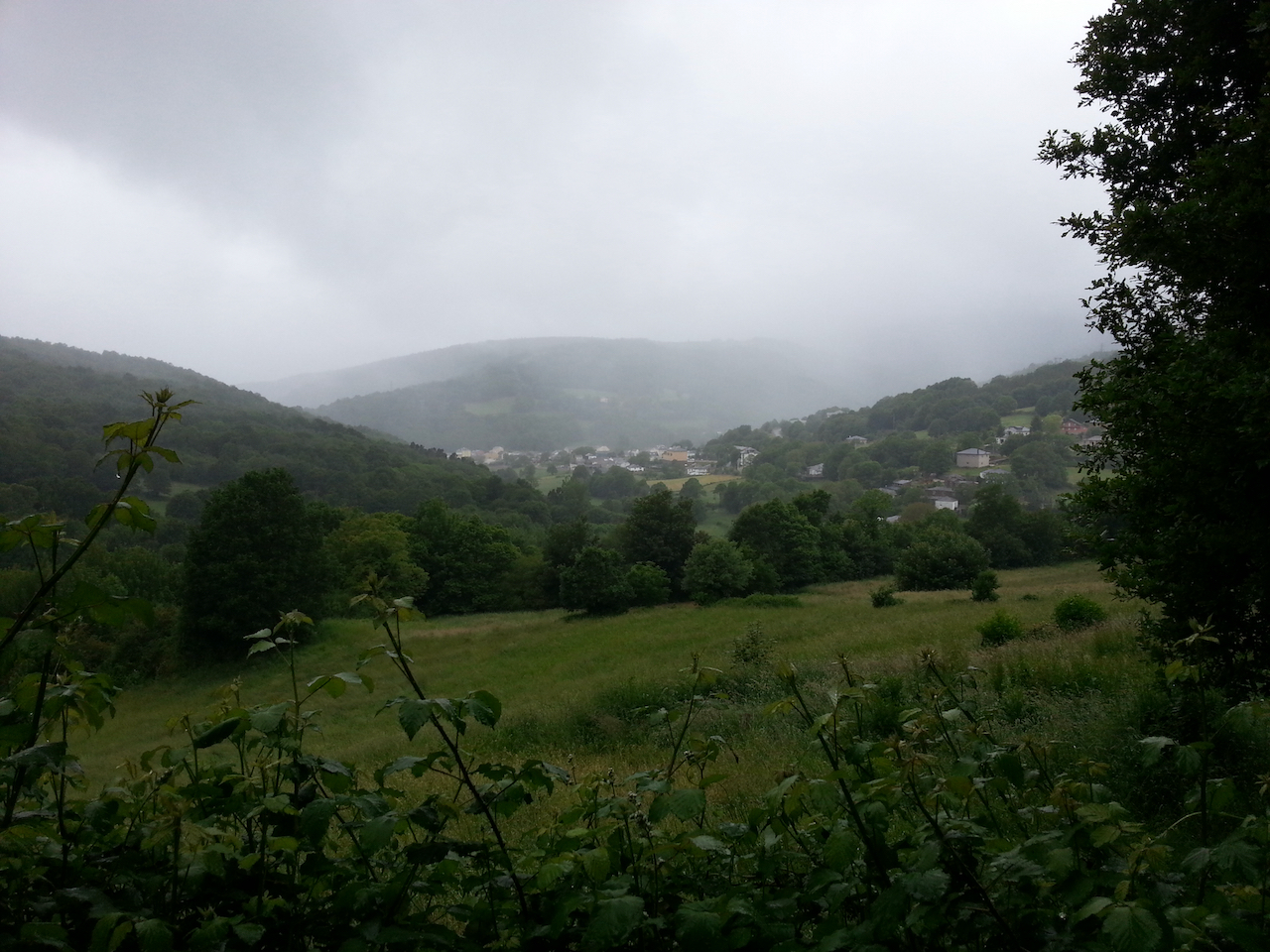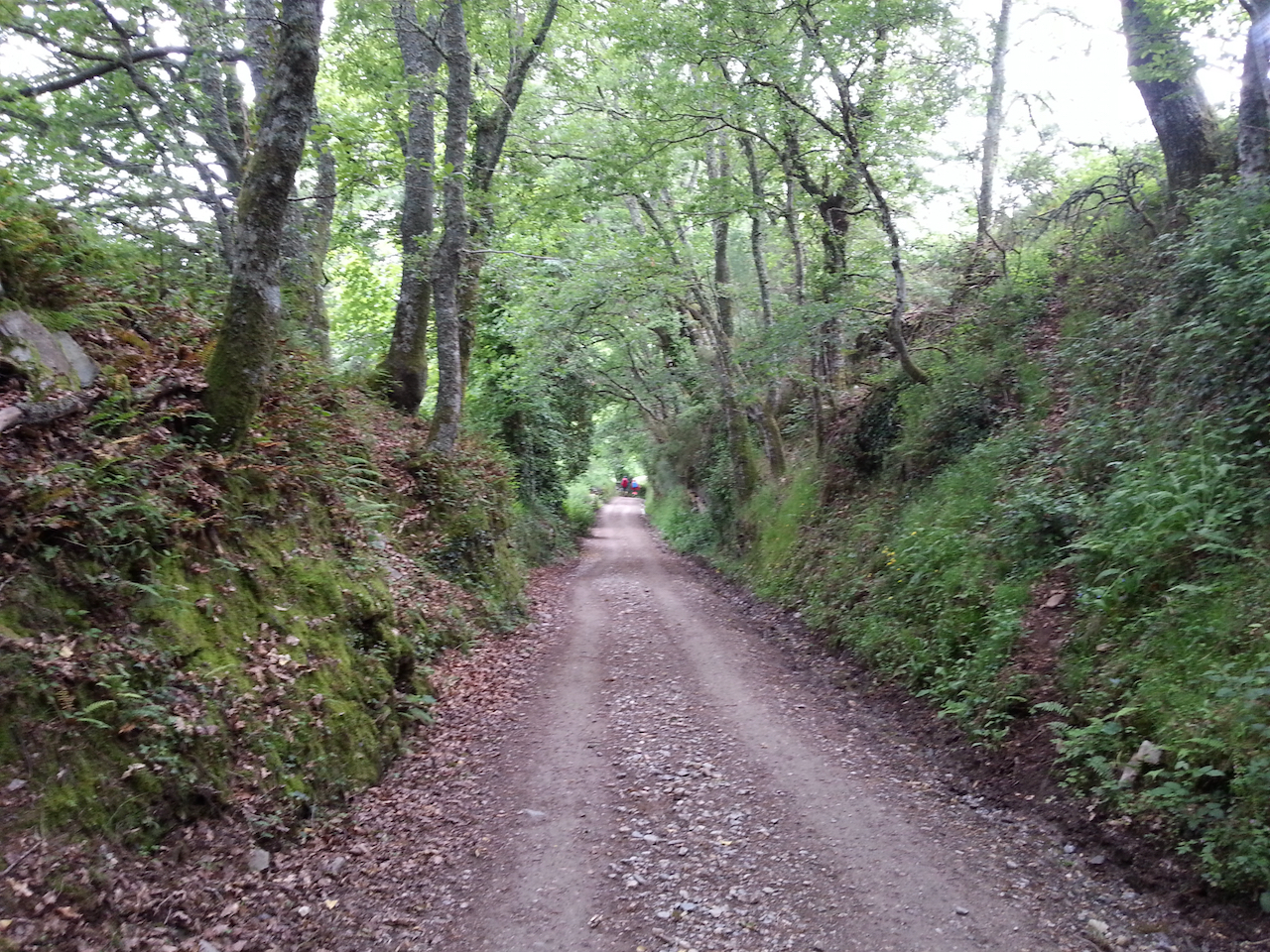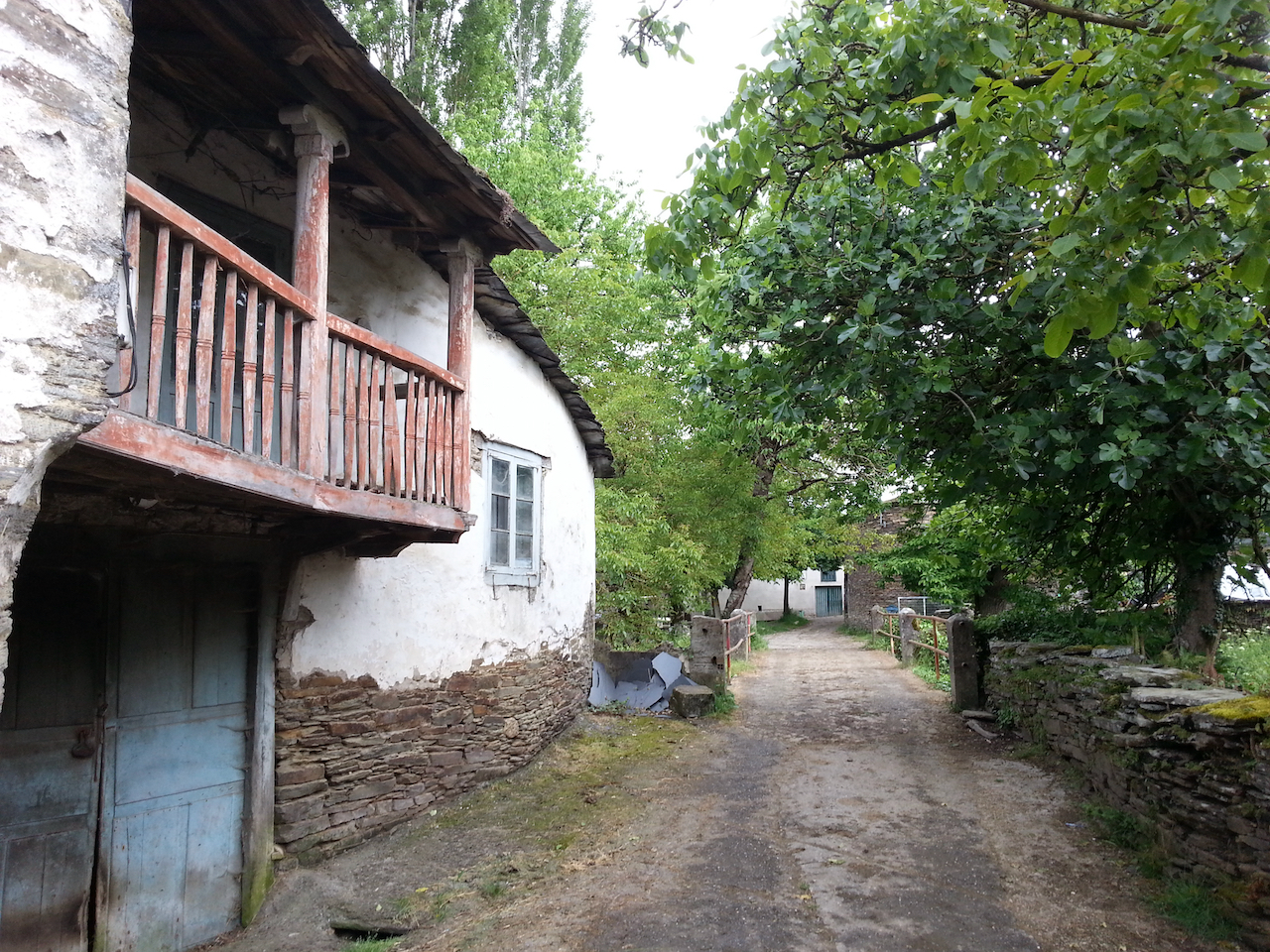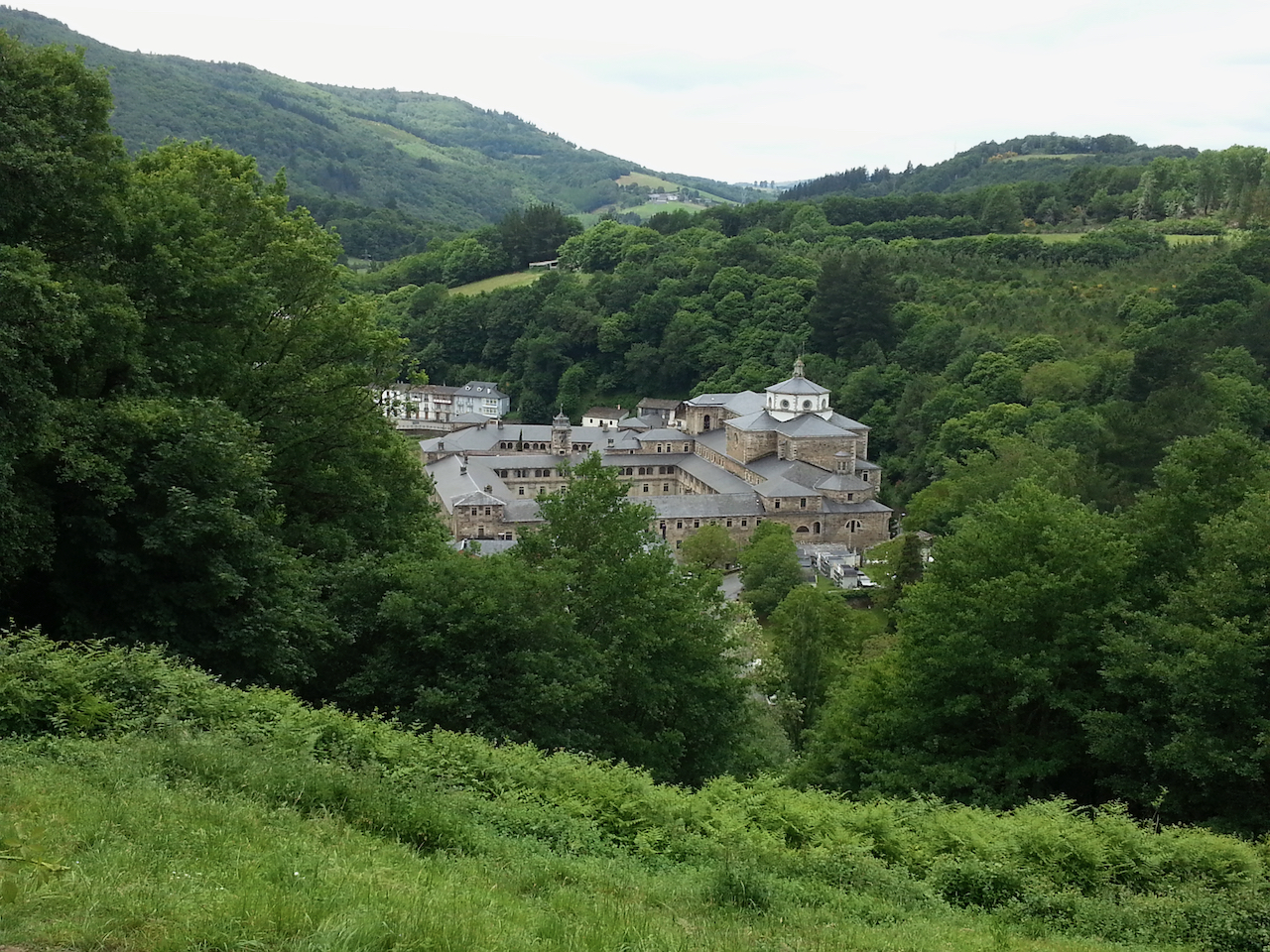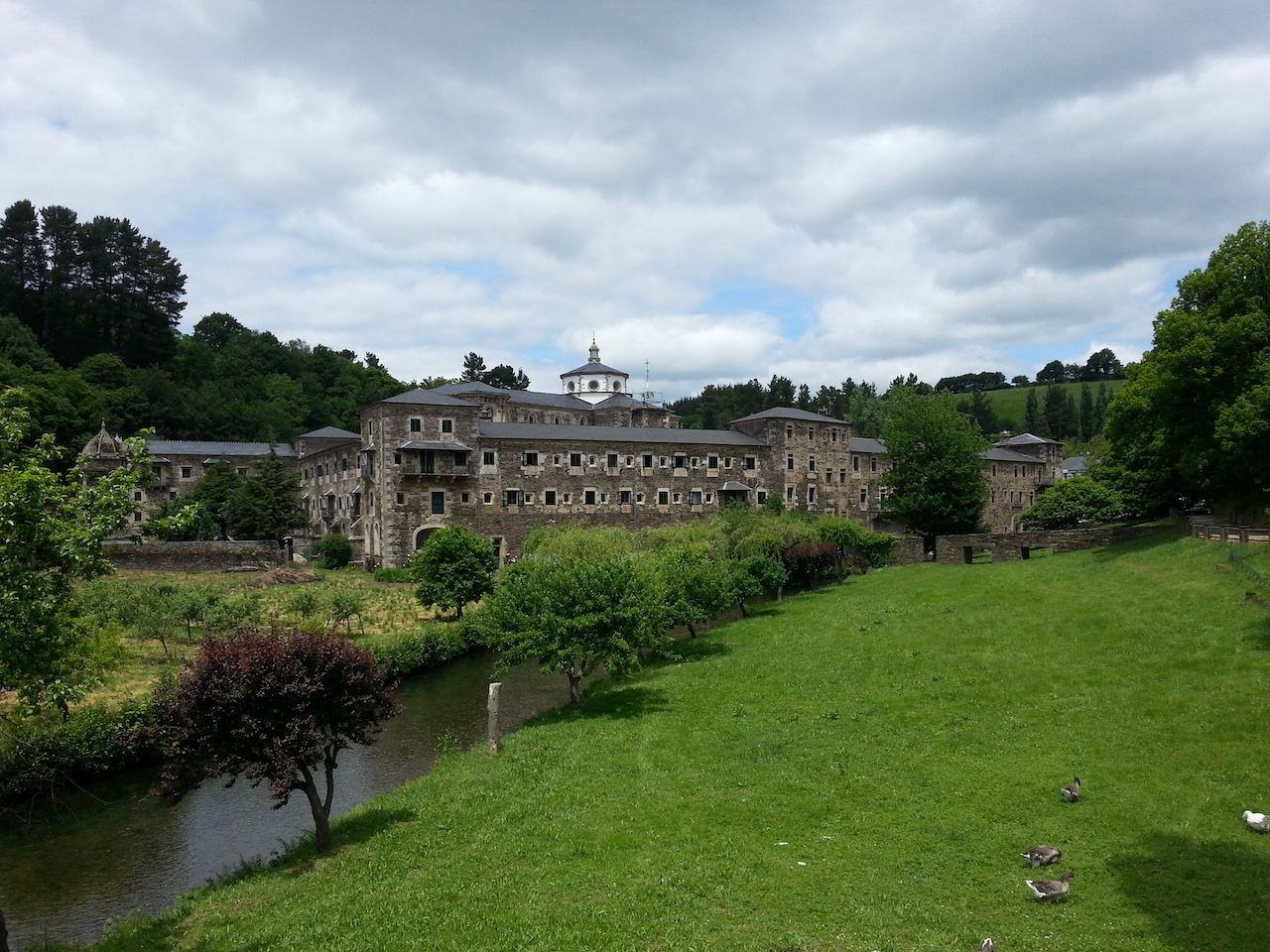22.4 km and 5:38 (see map).
Another good walk. Initially a short climb up a forest track, a gradual descent through rolling country and into Sarria, then onwards to a rural albergue between Rente and Peruscallo. There’s a dam here and the frogs are obviously at home in it given the way they are chattering. It’s idyllic.
Sarria is about 115 km from Santiago de Compostela and the city from which many tour groups embark on Camino trips. You have to walk a minimum of 100 km to get the compostela at the Santiago, hence Sarria is an ideal starting point for folk who want a shorter Camino experience. To be ‘awarded’ the compostela, your pilgrim credencial must be stamped at least twice daily from Sarria to the end (apparently to make it a little harder for people who might just want the compostela without putting in any work!).
Leaving Samos. The Camino heads out past the clock tower.
128.512 km to Santiago de Compostela.
A short climb up a muddy, rocky forest track …
… then out into the open rolling country.
Sarria ahead.
Credencial stamped at the Sarria cathedral.
Sarria again, from the path out.


